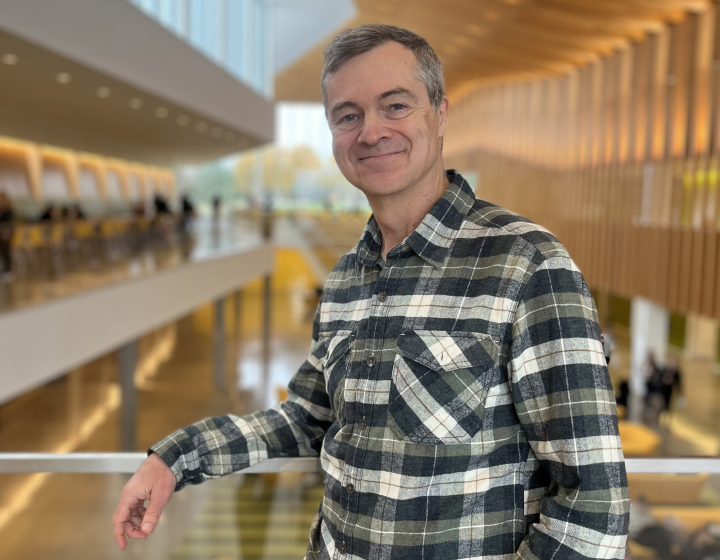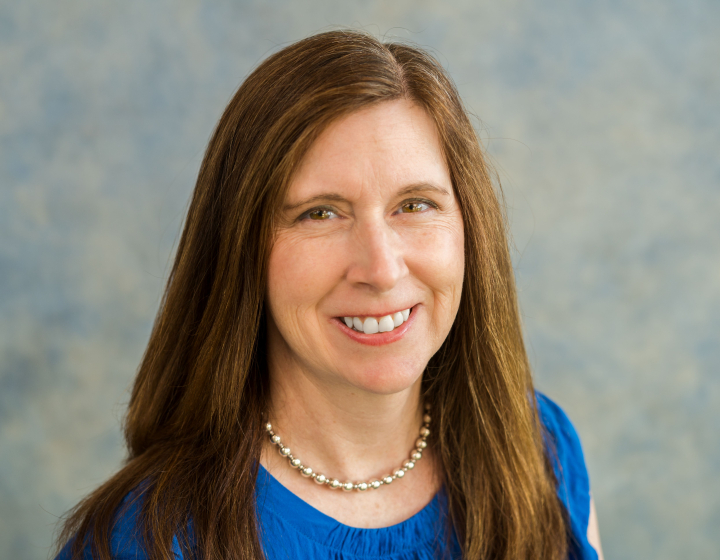Cornell expands LVT preceptorship program
Licensed veterinary technicians (LVTs) are vital members of any veterinary care team. In one day at the Cornell University Hospital for Animals (CUHA), one LVT might guide trainees on taking radiographs, another might handle a 1,100lbs horse, or organize supplies for a procedure — and everything in between.
It’s a position that requires extensive training, like the kind offered through Cornell’s Veterinary Technician Preceptorship Program. After over 15 years of preparing future veterinary technicians to enter the workforce, this six-week program remains one of the few of its kind based in a New York referral animal hospital. This year, it’s expanding its enrollment capacity, adding rotation training options, joining forces with the wildlife preceptorship and growing from one offering each summer to two.
“Cornell’s Veterinary Technician Preceptorship Program is enriching and supportive — it does more than check a box for future LVTs, which is why veterinary technician students from across New York and Pennsylvania apply,” said Kalli Anderson-Dyer, LVT in the dentistry and oral surgery service. Anderson-Dyer has chaired the Veterinary Technician Preceptorship Committee since 2010, and is currently co-chairing with fellow LVT Rachel Mikrut from the anesthesiology service, as Mikrut transitions into administering the program. Similarly, the Veterinary Technician Student Preceptorship in Wildlife Medicine has had its own unique history, with LVTs Alice Vandemark and Tina Hlywa as the wildlife chairs.
“Having a program in a referral hospital exposes students to a wider range of training experiences than might usually be found in smaller veterinary practices,” Mikrut said. Indeed, in the last fiscal year alone, CUHA saw approximately 30,000 cases, ranging from companion animals, large animals, avian, wildlife and more.
Growth opportunities
A preceptorship places veterinary technician students within a care facility for hands-on training that fulfills requirements for their schooling. To become an LVT, students enter a veterinary technology program, which are typically two years long and include externship and preceptorship requirements, and six weeks of clinical experience. After graduation, LVTs are expected to regularly renew their license and attend continuing education training.
The Cornell program started in earnest in the early 2000s, led by Laura Barlow, LVT in the oncology service, who began with a small group of just six students. Barlow had actually done her own preceptorship at Cornell in 1991, mentored by fellow LVT Deb Watrous. “When I was restarting the program, I sat down with each of the college’s preceptorship checklists and started a plan that would incorporate as much as we could, with as much hands-on that we could accomplish,” Barlow said. “I still consider being a key player in getting it back off the ground one of my best career accomplishments while here at Cornell.”
Vicki Weber was one of the program’s early students in 2004. “I made a blind inquiry to the Cornell Equine and Nemo Farm Animal Hospitals and crossed my fingers,” Weber said. “For six weeks my primary focus was equine and farm animal medicine, mentored by the now retired Jean Young.”
Weber has since returned to Cornell, working as the sole LVT for Maddie’s ® Shelter Medicine Program for seven years until moving to the small animal internal medicine service in February 2022.
As the program grew over the years, enrollment expanded to accommodate between 12-20 students. During their time at CUHA, students will choose two rotations, with options including large animal surgery, large animal medicine, large animal anesthesia, small animal surgery, small animal internal medicine, small animal anesthesia, oncology or exotics. Moreover, wildlife students at the Janet L. Swanson Wildlife Hospital have exposure to anesthesia, surgery, internal medicine and rehabilitation rotations.
This program is also unique in that participants have access to continuing education opportunities, state-of-the-art equipment, the expertise of Cornell LVTs and clinical faculty members, as well as exposure to nearly every animal they’re likely to encounter on the job — from large and small animals to exotic pets and wildlife. As it has grown over time, it now includes courses in CPR, parasitology and dentistry, among others. Students are mentored by LVTs, and encouraged to ask questions of veterinary students, residents and chiefs of service as well.
“The preceptorship students can sit in on case and topic rounds, and they see unusual cases and treatments that a private practice would not be able to perform,” Anderson-Dyer said.
“They see everything from simple exams to some of the most diagnostically and surgically complicated and challenging cases,” Weber said.
Since 2010, approximately 75 participants have successfully completed the program, despite a temporary pause due to the pandemic.
This year, the preceptorship program combines with that of the Janet L. Swanson Wildlife Hospital, which had previously operated separately. Wildlife students will attend orientation, and those within CUHA receive a few days of exposure in dentistry, central sterilization, pharmacy, radiology and continuing education courses for two weeks, and then proceed to their chosen rotations. By combining the programs, not only will students be able to fulfill their learning checklists, but also be exposed to Cornell as a whole.
“We want the students to see what a day in the life of a technician is really like,” Anderson-Dyer said.
Career readiness
This in-depth exposure is core to the preceptorship, and a vital part of preparing students for their careers. After finishing the program and graduating from their veterinary technology school, most students start work in general veterinary practices, usually in small animal medicine.
“Our hope is that the students will come back to work for us at Cornell as veterinary technicians,” Anderson-Dyer said. So far, 14 former preceptorship students have returned to work at Cornell.
Mikrut herself is a former preceptor who got a job at CUHA after graduating. “After finishing my schooling, and especially after my preceptorship here, I felt confident in applying for a job at Cornell,” Mikrut said.
Tesla Rich, LVT at Cornell’s Small Animal Community Practice, rotated through ophthalmology, cardiology, radiology, large animal internal medicine and large animal surgery when she did her preceptorship in 2012. “I wanted to learn as much as I could in the time I was given,” she said, noting that these rotations also showed the variety of career paths open to an LVT. Rich describes Cornell as a “place where great minds come together to heal and save animals.” Anderson-Dyer herself was one of Rich’s primary mentors. “She is a great educator and emits an energy that makes everyone feel welcome,” Rich said. “She is a gem within the Cornell family.”
Rich also recalls surgeries with the ophthalmology team. “I helped set up for a phacoemulsification procedure and observed the surgery,” she said. “I will never forget the expert skill of the surgeon and the symphony of sounds from the equipment!”
The preceptorship prepared Rich for her first job, helped her understand the roles and responsibilities of a veterinary care team — and gave a firsthand look at what it would be like to work at Cornell. “I am very proud to be a part of such a high level of veterinary medicine,” she said.
Mikaela Winder, LVT in the Cornell Equine and Nemo Farm Animal Hospitals, completed her Cornell preceptorship in 2015 and similarly decided to apply for a job at CUHA following graduation. “I joined as an emergency room LVT soon after graduation, and held that job for four years before transitioning to large animal surgery,” she said. Winder’s chosen focus during the preceptorship was actually small animal orthopedic surgery, but during the program, she made connections across the hospital that encouraged her to branch out.
“The variety of specialties that I was able to rotate through was very appealing,” Winder said. “It allowed me to experience multiple fields of veterinary medicine which ultimately helped me determine where I wanted to be in my career. It prepared me very well.”
The enthusiasm of the technicians and faculty stood out to Winder, and now she guides preceptors herself. “Coming back to work here has been nothing short of a dream come true,” she said.
Weber appreciated that the immersive aspect of the program. “I was made to feel like a working part of the team, like I was already employed,” Weber said. “That helped to involve me in diagnostics and procedures, to build on my current skills and learn new ones.” For Weber, returning to Cornell was exciting. “I feel honored to be part of the Cornell veterinary community, to be able to teach and learn every day and work in collaboration with top minds in the veterinary field.”
Seeing a participant go from preceptor to employed LVT is a huge benefit of her role, says Anderson-Dyer. “We always hope that someday our students will want to come back and work with us.”
Enriching the program
Although navigating the pandemic has been challenging, Anderson-Dyer says they’ll remain flexible and adaptive. “The coronavirus pandemic is of course a challenge, but we have managed this last year with increased testing, masking and social distancing,” she said. “I hope schools continue to send their students to our program, and that we continue to hire newly graduated technicians.”
She will remain on the committee once Mikrut, her successor, is fully onboarded.
“I hope to continue to grow the program and absorb as much knowledge from Kalli as I can before she retires,” Mikrut said. “We’d like to eventually be able to offer rotations in all areas of the hospital and to broaden our recruitment efforts to encourage more students to apply. In the end, I just want to give the preceptors the same wonderful experience I walked away with.”
So far, they are succeeding. “Cornell offers jobs in all areas of interest, and the best mentors you could ask for,” Rich said.
The first summer program this year begins May 31. Learn more about the preceptorship online.
Written by Melanie Greaver Cordova





